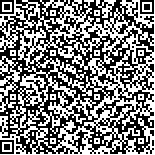下载中心
优秀审稿专家
优秀论文
相关链接
摘要

目前可遥感反演的海上风能参量主要为平均风速和平均风功率密度,缺乏对风能方向性参量的反演。本文建立了以风向频率、风能密度方向分布为核心的风能方向性参量体系及相应的反演方法,使用2007年—2016年ASCAT星载散射计观测数据进行了反演实验,并利用海上现场观测数据对反演结果进行比较验证,通过理论分析和模拟实验对反演方法的数据量需求和误差传递进行了分析。结果表明,90%的反演结果通过了所有的同一性检验,验证了其有效性和准确性;风向频率和风能密度方向分布准确反演所需的最小数据量分别为350条和800条;遥感反演的风速风向数据的误差使得最终反演的风能方向性参量趋于离散,真实的风能方向分布越集中,对其影响越敏感。
The offshore wind energy industry has surged in recent years as a main source of clear energy. Meanwhile, remote sensing can retrieve sea surface wind data and provide valuable information to locate suitable offshore wind power plants. Published studies mostly focus on the retrieval of average wind speed and average wind power density. However, wind directional distribution is also required in locating potential offshore wind power plants. Therefore, a method is proposed to retrieve the directional distribution of wind energy from satellite scatterometer observations.
According to Chinese national standard (GB/T 18710-2002), wind directional frequency and directional distribution of wind energy density are used to delineate the directional distribution of wind energy. In addition, certain circular statistical parameters of wind energy, circular mean, and circular standard deviation are selected to depict the characteristic of wind energy. Wind speed and directional data in certain timespans are used as input in the proposed method. These wind data can be obtained from satellite observations or reanalysis datasets. Then, 0.1°×0.1° global maps of wind energy directional distribution parameters are retrieved by the proposed method from 2007-2016 advanced scatterometer (ASCAT) wind products. These retrieval results are accordant with antecedent research and scientific facts.
To test and verify these retrieved results, they are compared with parameters calculated from 20 NDBC buoys. First, the ASCAT wind products and buoy data are screened for quality control. Then, all buoy-measured winds are converted to 10 m height to match the ASCAT wind retrievals. Subsequently, a time and spatial matchup dataset of ASCAT and buoy data are built, and the differences between them are calculated. A non-parametric hypothesis test is also implied to assess the accuracy of circular error statistics.
A total of 80% of the test dataset pairs passed all hypothesis tests and satisfied all assessment criteria (total difference <10%). Meanwhile, 100% of the dataset pairs satisfied the criteria and passed the test in which only wind direction parameters were considered. Furthermore, 90% of the dataset pairs passed the test for wind energy circular statistical parameters. In addition, 80% of the dataset pairs satisfied the total difference criteria of directional distribution wind energy.
One model was constructed to describe the relation between the retrieval accuracy of wind directional distributions and record number using the law of large numbers and a basic understanding of the remote sensing process. The function that expresses the relation between record number and retrieval accuracy was obtained, and the minimal record number required to obtain reliable retrieval results was calculated with the aforementioned function by numerical stimulation and curve fitting. Moreover, the impact of the time characteristic of remote sensing data (fixed local time) was considered in the analysis.
Models were built to describe the retrieval error of the remote sensing process and the actual offshore wind directional distributions on the basis of normal distribution and circular statistics. These models enabled us to understand the effect of the retrieval error of remote sensing quantitatively and qualitatively. Thus, the deconvolution algorithm was designed to eliminate this effect.
Conclusion:(1) The proposed parameter systems can be retrieved by remote sensing data to depict the directional characteristics of wind energy thoroughly. (2) Two methods, namely, the total difference and the Kuiper test, were effectively used to test and verify the difference among the directional distributions. The Kuiper test results showed that the total difference identical criterion of the two directional distributions was built. (3) The validation demonstrated the effectivity and accuracy of the new method and the data product produced by this model. (4) At least 800 records were required for the reliable retrieval of DDED, and the number for DF was 350. (5) The error in the retrieval of wind direction from remote sensing data influenced not only the final retrieval accuracy of the directional distribution of wind energy but also the distribution itself. The more dispersed the distribution, the less the effect of the retrieval error of wind direction on the accuracy of directional distribution retrieval.

